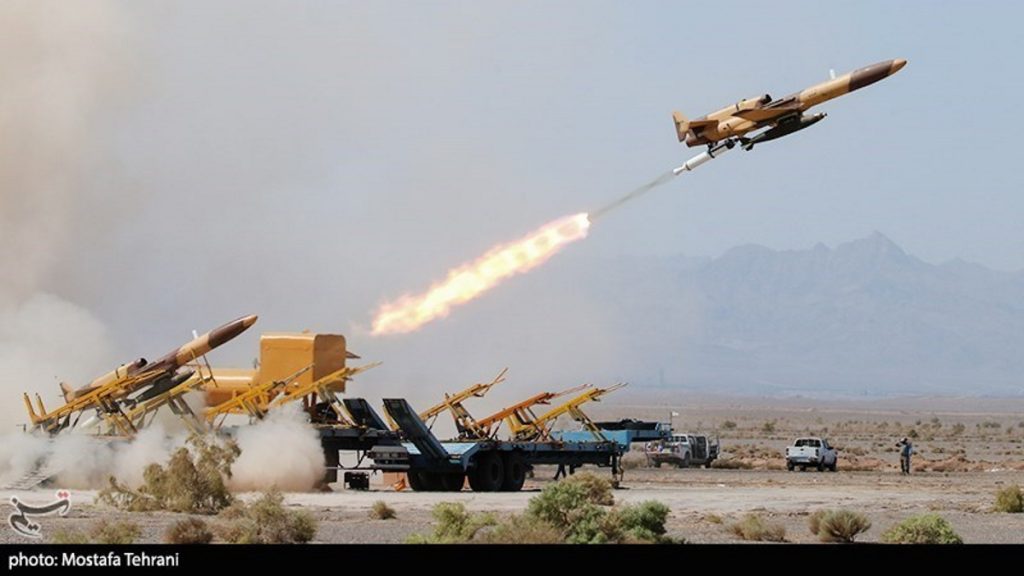Despite widespread beliefs, Russia and Iran are not allies. They are not even strategic partners. That, however, does not prevent Moscow and Tehran from expanding military cooperation.
According to reports, the Islamic Republic has finalized a deal with the Kremlin to purchase Russian Sukhoi Su-35 fighter jets. They could play a significant role in a potential large-scale conflict between Iran and Israel. But the problem for Tehran is that the Jewish State could use Azerbaijan’s territory to launch strikes against the Islamic Republic, which would lead to a direct war between Iran and Azerbaijan. Such an outcome, at least at this point, does not seem very probable. However, the fact that the Israeli Prime Minister Benjamin Netanyahu recently said that “horrible nuclear war will break out if the world does not stop Tehran from obtaining atomic weapons”, indicates that, in the long-term, a major war in the Middle East, and potentially in the South Caucasus, should not be ruled out.
For the time being, Russia and Iran will likely continue attempting to complete the International North-South Transportation Corridor (INSTC) rail network that would connect the two countries via Azerbaijan. As a transit nation, the energy-rich Caucasus state would benefit economically from the INSTC, but it remains unclear if the West, including Israel, will try to prevent Moscow, Tehran and Baku from completing the project.
One thing is for sure: Moscow and Tehran will continue developing military cooperation, one way or another. That, however, does not mean that the two nations plan to form an official alliance in the near future. At this point, even a joint declaration on strategic partnership does not seem to be on the table.
Although Russia, bogged down in Ukraine, lacks weapons, the Kremlin reportedly hesitates to buy ballistic missiles from the Islamic Republic out of concern that Ukraine’s Western backers would in response supply Kiev with long-range rockets. But the United States has already approved $2.2 billion military aid to the former Soviet republic, and the package includes ground-launched small-diameter bombs (GLSDB) which can hit targets 150 kilometers (93 miles) away.
Thus, Moscow continues calculating, while the West remains determined to supply Ukraine with all kinds of weapons. The very fact that the US House of Representatives approved $100 to fund the training of Ukrainian pilots for F-16 fighter jets, suggests that, sooner or later, the Ukrainian Armed Forces will get the US-made jets. For now, the absolute priority for the United States is to supply Ukraine with artillery ammunition as part of preparations for an inevitable offensive that the Ukrainian military is expected to launch in the coming months. Fighter jets may come in later stages of the conflict.
Iran, for its part, reportedly plans to limit the range and payload of short-range ballistic missiles (SRBMs) it may eventually sell to Russia. Tehran allegedly aims to avoid violating the United Nations Security Council Resolution 2231, which bans it from exporting drones or SRBMs with ranges exceeding 300 kilometers (186 miles) and payloads greater than 500 kilograms until October 2023. In other words, until October, the Islamic Republic could supply Russia with ballistic missiles that have a range shorter than 186 miles. Meanwhile, the West will undoubtedly pressure both Moscow and Tehran not to develop a military cooperation that could have a serious impact on Ukraine’s defense capabilities.
If, however, Iran eventually supplies Russia with longer-range ballistic missiles, Israel – the Islamic Republic’s archenemy – could provide Ukraine with air defense systems. Further, the Jewish State will almost certainly continue carrying out drone strikes on Iranian military facilities, especially after Tehran turned a blind eye to such Israeli actions in January.
Whether Iran decides to supply Russia with ballistic missiles or not, sooner or later the West is expected to deliver longer-range missiles to Ukraine. Moscow, on the other hand, will likely continue sending captured NATO and US-made weapons to the Islamic Republic, hoping that Tehran will manage to make its own version of the weapons. Such moves perfectly illustrate Russia’s dependence on Iran, and the fact that the Kremlin, ever since Vladimir Putin came to power, preferred to invest in oligarchs’ yachts and real estates abroad, rather than in the country’s military-industrial complex. As a result, Russia is forced to import Shahed drones from Iran, since it has not properly developed its own drone industry.
Thus, without a “Lend-Lease”, be it from Iran, North Korea, or potentially China, Russia will have a hard time preserving the status quo in Ukraine, let alone successfully conducting any major military offensives. If the Kremlin continues pursuing its current economic, military and political course, Russia will remain dependent on foreign military assistance, which could gradually turn the once great power into a proxy state that other major actors will use to achieve their own geopolitical goals.
